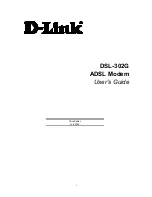
A3LA-RG Guide Version B
Document Number: 451-93156-009B
85 of 180
<k1> represents the maximum number of sequentially numbered I frames that may
be outstanding at any given time at downlink direction (IWF->A3LA-RG) and can take
the following values:
1-105. Default is 105.
<k2> represents the maximum number of sequentially numbered I frames that may
be outstanding at any given time at uplink direction (A3LA-RG->IWF) and can take the
following values:
1-105. Default is 105.
<t1> is used to supervise the acknowledgment of transmitted unnumbered frames.
The values are defined to be the earliest instant to enter the recovery procedure and
can take on the following values:
27-255 (in 50-ms unit). Default is 30.
<n2> is used to represent the maximum number of re-transmission attempts of a
frame (e.g. I,S,N,U frame) and can take on the following values:
1-255. Default is 15.
<t2> is used to indicate the amount of time available within which the acknowledging
frame must be transmitted and can take on the following values:
1-255 (in 10-ms unit). Default is 10.
<r1> is used to represent the maximum number of S frames that are used to
acknowledge I frames at downlink direction (IWF->A3LA-RG) and can take on the
following values:
1-10. Default is 10.
<r2> is used to represent the maximum number of S frames that are used to
acknowledge I frames at uplink direction (A3LA-RG->IWF) and can take on the
following values:
1-10. Default is 10.
<t4> is used to supervise the re-sequencing of misordered frames. The values are
defined to be the earliest instant to consider a tardy frame as lost. It can take on the
following values:
















































